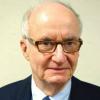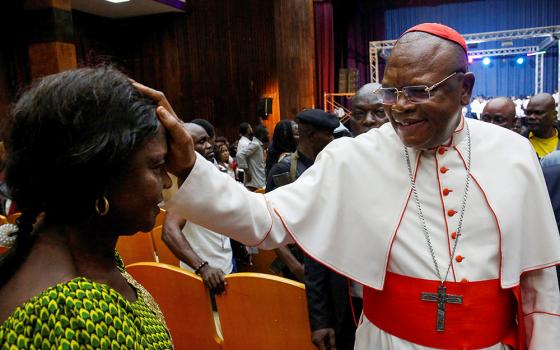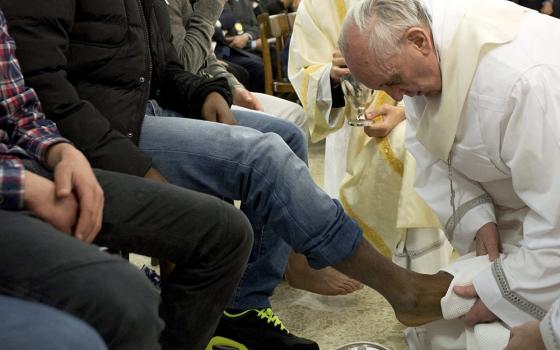
Conversion is sort of like the untouchable "third rail" of religion: switching faiths is frequently the cause of family rupture, personal torment and bitter theological debates. Some parents consider converted children to be dead, both spiritually and physically.
For centuries, faith communities regarded conversions as apostasy -- even treason -- while clergy who officiated at such ceremonies sometimes gloated over the sheep that left another's flock for their own.
Jews reject missionary campaigns aimed at converting them to Christianity, perceiving such proselytizing efforts as religiously insulting. Nor is it forgotten that during the Holocaust, even sincere Jewish converts to Christianity did not escape Nazi mass murder.
Conversion did not matter to Nazis. They believed after the baptismal water dried, the new Christians nonetheless remained Jews, hated "objects" to be physically annihilated.
But in the United States, personal conversions and religious mobility have increased, both in number and social acceptance. A widely watched survey by the Pew Forum on Religion & Public Life revealed that 28 percent of American adults have changed their original religious identity -- moving from one faith community to another or to no faith at all. Add in the numerous denominational moves among Protestants, and the percentage of those changing religions jumps to 44 percent of Americans.
Recently, three religious conversions have received media coverage and public attention.
In March, 63-year-old former House Speaker Newt Gingrich converted to Roman Catholicism. Decades earlier, while in graduate school, he had become a Baptist. Gingrich gives much credit to his third wife, Callista, for bringing him into the Catholic Church.
In Miami, Alberto Cutie, a wildly popular 40-year-old Cuban-American Catholic priest, was welcomed into the Episcopal Church a few weeks after being photographed on a Florida beach canoodling with his girlfriend, whom he now intends to marry.
Miami Episcopal Bishop Leo Frade welcomed Cutie into the Episcopal fold, but an angry Catholic Archbishop John Favalora said: "Father Cutie's actions have caused great scandal within the Catholic Church, and led to division within the ecumenical community and the community at large."
Alysa Stanton's 1987 Orthodox conversion to Judaism from Pentecostal Christianity culminated recently when she was ordained a Reform rabbi after completing five years of study. The newly minted Rabbi Stanton, 45, is the first African-American woman rabbi, and this summer she will assume her duties as the spiritual leader of a majority white synagogue in Greenville, N.C.
Although these conversion stories are different, they share one thing in common: Gingrich, Cutie, and Stanton did not change their religious identities in order to gain an important job or to improve their status in society.
Gingrich, whether Baptist or Catholic, remains in the political arena. Cutie continues as a Christian priest*, albeit wearing a different clerical collar. When Stanton converted 22 years ago, her goal was not to enter rabbinical school and land a synagogue job. All three conversions simply represent current trends within American society.
It's a welcome change, because things haven't always been that way.
In 1897, 37-year-old Gustav Mahler faced a painful dilemma: He could become the director of the prestigious Imperial Vienna State Opera, but only if he abandoned Judaism and converted to Catholicism.
Under the anti-Semitic imperial laws of the time, no Jew -- no matter how talented or skilled -- could occupy such an exalted position. Other Jews who were leaders in the arts, sciences, universities, law and medicine faced similar barriers to professional advancement.
Mahler was not a devout Jew, and he correctly recognized that conversion was his only ticket to the Opera. So he switched. After his baptism, he never again attended Mass, and upon his untimely death in 1911 at age 50, there was no religious funeral service of any kind, nor any religious markings on his gravestone.
Even so, Mahler's compositions are super-saturated with spiritual yearnings and musical visions of life and death. One example is the Adagietto -- one of my personal favorites and available on YouTube -- from Mahler's Fifth Symphony. It is a heart-breaking musical bridge between this life and the next. The Adagietto was played at Sen. Robert Kennedy's funeral Mass at St. Patrick's Cathedral in 1968.
I believe much of the angst in Mahler's music expresses his intense guilt and anguish created by an anti-Semitic society that unfairly demanded conversion as the price for professional advancement. Thankfully, those days are gone.
[Rabbi Rudin, the American Jewish Committee's senior interreligious adviser, is the author of The Baptizing of America: The Religious Right's Plans for the Rest of Us.]






